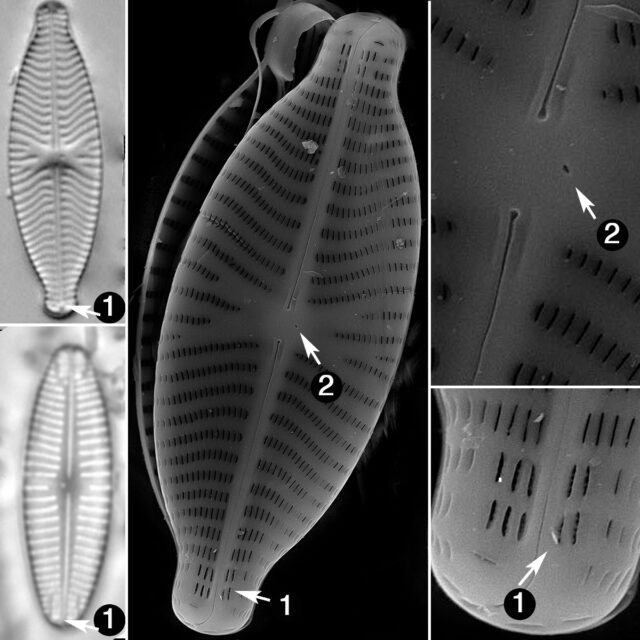Guide to Geissleria

Credit: Marina Potapova
- Annulae present at poles
- Isolated punctum present (or absent) in the central area
- Valve elliptic or linear-elliptic, with rounded or rostrate ends
Geissleria valves are elliptic to linear-elliptic, becoming obtuse, broadly rounded or rostrate at the ends. The striae are comprised of fine lineolate areolae; areolae are 50-80 in 10 µm. Distinctive annulae are present at the poles. The annulae are comprised of one to four transapical striae that interrupt the typical striae. Annulae are formed by the last few distal striae, which are larger and more elongate, with more densely spaced pores. Internally, the annulae possess a cluster of silica outgrowths. The annulae may be distinctive or barely discernible, depending on the species. For example, the annulae of Geissleria acceptata are difficult to resolve in LM. The raphe is straight and filiform, with straight proximal ends. Terminal raphe ends are deflected. An isolated punctum may be present, or it may be absent, in the central area.
Geissleria includes species that were formerly included in the 'Annulatae' section of Navicula, including Navicula paludosa Hust. and N. similis Krasske. Geissleria species are found in oliogotrophic to eutrophic waters, but are locally rare in abundance. The genus includes over 70 taxa, which are widely distributed across Europe, Asia, South America, North America and the Maritime Antarctic and sub-Antarctic. Geissleria species have been recorded in a range of freshwater habitats, including rivers, lakes, springs, splash zones, and soils (Novais et al. 2013). Species level ecological preferences may be more specific.
 Diatoms of North America
Diatoms of North America